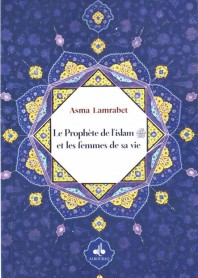Muslim women between Islamic conservatism and islamophobia
Centuries of stagnation and decline have resulted in the victimization of the Muslim women, a victimization that endures till present, nourished by a social system that, to varying degrees, perpetuates oppression in the name of religion. The certainty of the victimization of Muslim women is rarely acknowledged in the Muslim world where, most often, the “other” is suspected of wanting to corrupt the entire moral fiber of the Muslim society whose prime custodian is the Muslim woman!
It is by no means a secret that, as presently understood and accepted by a conventional and populist reading of Islam, the current status of Muslim women lends an ideal instrument to a certain western hegemony, keen on discrediting an entire belief system. While the current meta-discourse of the “veiled” Muslim woman, “recluse” and “oppressed,” might be at times unconscious, it is nevertheless a relentless reproduction of the, still in-vogue, orientalist and colonialist visions, in contemporary, post-colonial depictions.
The unrelenting and bitterly accusatory exchange between the two camps serves principally as a pretext for a western political view of cultural superiority, which in turn works to reinforce the dualistic interpretation that, as if it were the law of nature, counter-poses the “universal” model of the “liberated” Western woman, against that of the “oppressed” Muslim woman who, therefore, must be liberated.
The contrasting portrayal of these two models leads, almost naturally, to the current classification of the Muslim woman, not only as a second class citizen, but also as a pitiful repulsive creature, in the contemporary context of modernity, civilization and liberty. It is rather ironic that despite the “liberating” and “universality” pretensions of this particular western discourse, what it ends up revealing is the paternalistic voice of a former colonial authority that has not yet been able to break free of the chains of a colonial legacy whose mission was professed, by the colonists themselves, as that of “civilizing”.
In this setting, the so-called “liberalization” of Muslim women becomes a tool through which western values are reaffirmed, thereby securing their perpetual domination over those of the other, thus reinforcing the existing power relations between the two.
The demonizing of the West and making them the perpetrators of all ills is not, in the least the purpose here. The criticism is in fact specifically focused on a certain breed of western thought that, based on its own conception of the “universal,” pretends to have a singular monopoly on modernity and on truth. To the contrary, such western exposés result in keeping the “Muslim woman” restrained within a painstakingly-designed, one-dimensional frame that re-confirms the supremacy of Western norms and values, the only means by which one would be able to set these wretched Muslim women free!
Between these two diametrically-opposed visions, the Muslim woman remains, against her will, a captive of a discourse that does not pay the slightest attention to her own will and aspirations. Entwined between a calcified Islamic code that sternly safeguards the boundaries that frame the “woman” question, and a strand of Western ideology that revels in belittling Islam via its own misguided interpretations of the position of Muslim women, the visualization of a possible third path that might pave the way toward the disentanglement of the Muslim woman from such an ideological impasse is indeed a big challenge.
The fact that the relationship between the two camps concerning the status of women in Islam is passionately contentious is difficult to refute. However, the questions that beg to be asked are: what is the root of this combative relationship? What lies behind such polemic? Is it in fact religion as a domineering value system, or is it rather a shared social dogma that has usurped religion and construed it in reference to a particular hierarchical structure that serves its own needs and enables it to assert control and impose its own sense of order?
Like other monotheistic religions, Islam is, on the one hand, a vehicle of God’s sacred message of peace, love, and justice, a God who, in creating human beings, men and women, He created them unambiguously free, equal, and worthy. On the other hand, the traditionalist Muslim interpretation of Islam results in the reinforcement of a male-dominated social reality, giving the impression that “female subjugation” is a principal edict of the religion itself.
In short, these biased and culturally-bound interpretations of the Sacred have resulted in obscuring the profound meaning of the Message. Furthermore, the enduring muddle between the “Sacred” and the “Interpretations of the Sacred” renders almost impossible a distinction between what belongs to the sacred Text and what is and should stay within the realm of subjective and thereby biased human interpretations, evidenced, at a certain level, by a daily reality of many Muslims, increasingly detached from the humanist spirit of its divine reference, the Qur’an, which favors the “insaan”, “human being”, regardless of his or her sex.
Today the topic concerning the status of women in Islam is progressively growing. In fact, the question of women in Islam has always been at the heart of the debate, of all debates in the Muslim world. What is different today is that within this intellectual strength, Muslim women themselves are increasingly active participants in this debate, in an effort to reclaim what was and remains their own but has been seized by men: women’s own destiny.
Today, by virtue of their own academic, social and theological inquiry, but also, and most importantly, in the service of their faith, many Muslim women are increasingly quizzical about an infinite range of presumptions, regarding this issue. More precisely, these women are challenging the conventional analysis that asserts that inequality between men and women and its accessories of discriminatory measures are an integral part of the sacred Text, by demonstrating that it is, in fact, the specific readings and interpretations of the Text, validated by patriarchal norms, that have legitimized these inequalities.
This present undertaking is not a movement that aims to pit women against men, within a confrontational framework. Admittedly, the new feminist perspective does challenge assumed male superiority, but without posing itself as a rival. It is a new perspective that can but enrich the exchange by bringing into the picture the spiritual experience of women, too frequently missing within the Islamic frame of reference. Obviously, spirituality is gender-free. However, interpersonal relationships with God are experienced differently by women and men. This is exactly where a feminine and feminist perspective becomes an essential component of the human spiritual experience.
This is then the enlightenment we are discussing, a feminine and feminist enlightenment that makes the spiritual its point of departure, in order to return to the roots of the Qur’an, the divine, eternal word. An enlightenment whose relationship with the Superior is one that is fundamentally liberating as it liberates the devotee from all other servitudes; that frees one from conformity to trendy models; that aspires to be neither predictably Western nor stereotypically Oriental, but autonomous and independent; one that is free to decide for itself, to redraft its own history and make its own choices; to rewrite its history and to determine its own place. An enlightenment that while confidently rooted in its own spiritual legacy, aspires to be open to all forms of human interchange, and ready to share with “others,” all “others,” its universal values of ethics and justice.
Asma Lamrabet
March 2021
À propos de l'auteur

ASMA LAMRABET
Native de Rabat (Maroc), Asma Lamrabet, exerce actuellement en tant que médecin biologiste à l’Hôpital Avicennes de Rabat. Elle a exercé durant plusieurs années (de 1995 à 2003) comme médecin bénévole dans des hôpitaux publics d'Espagne et d’Amérique latine, notamment à Santiago du Chili et à Mexico.






